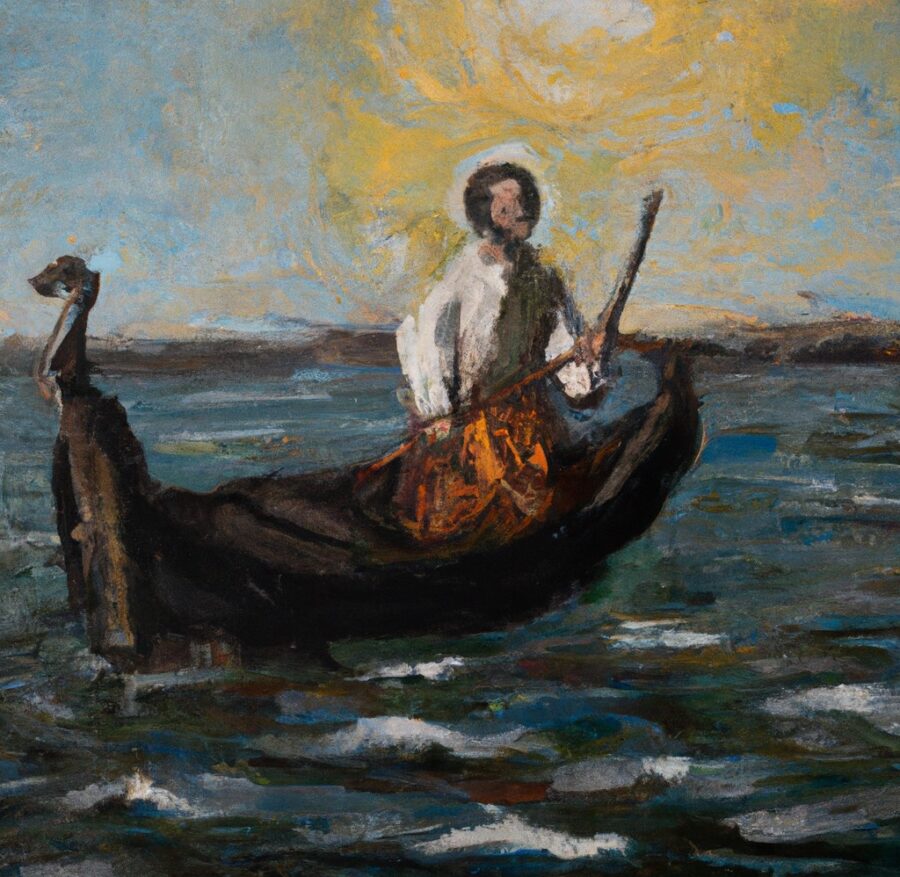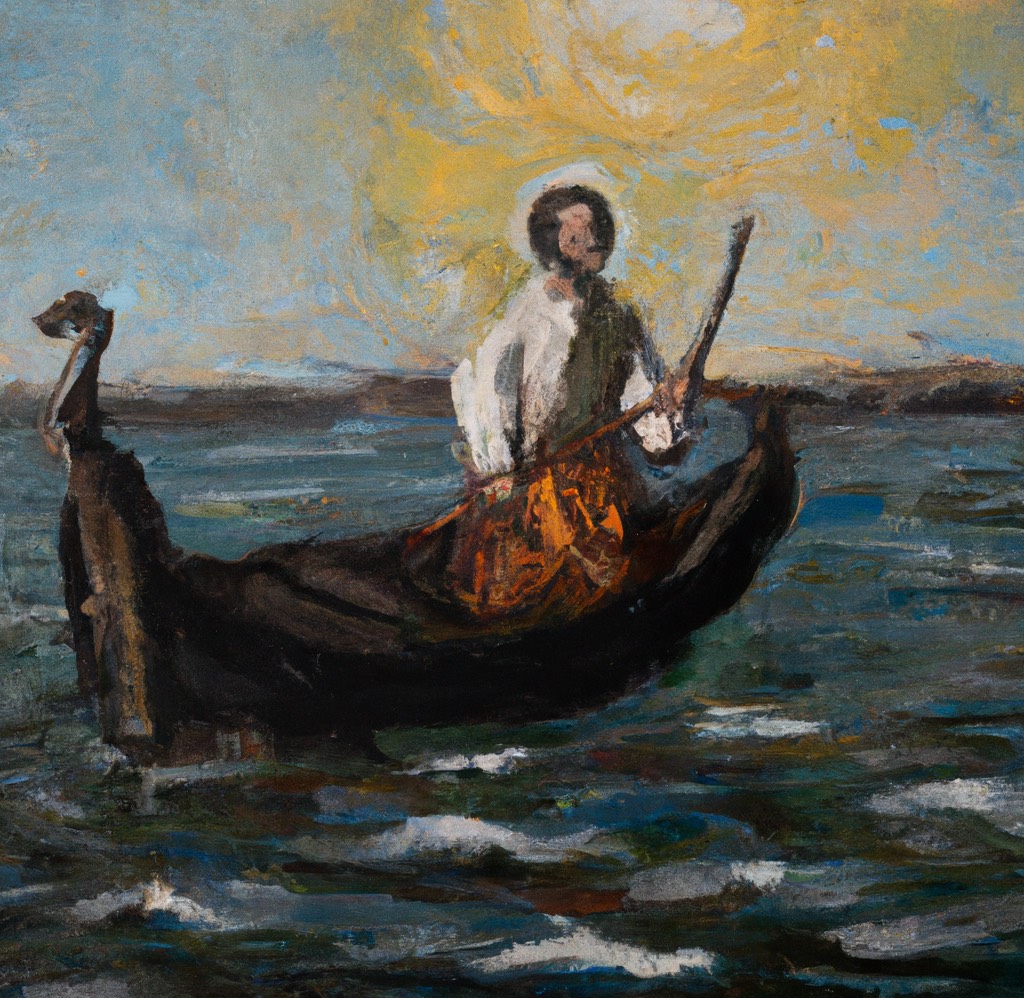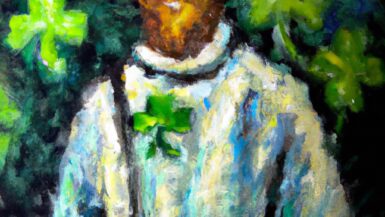St. Brendan the Navigator, also known as Brendan of Clonfert, is one of the most intriguing figures in the annals of Irish Christianity. Celebrated as a daring seafarer and explorer, he is best known for his legendary voyage in search of the “Promised Land of the Saints.” This article delves into the life of St. Brendan, the tales of his voyages, and the enduring legacy of this adventurous saint.
Early Life and Spiritual Formation
St. Brendan was born around 484 AD in County Kerry, Ireland. He was baptized by St. Erc, a bishop who recognized Brendan’s spiritual potential and provided him with his early education. Brendan was then sent to a monastery school for further education, where he was ordained a priest at the age of 26.
Founding Monasteries
St. Brendan is noted for founding numerous monastic settlements across Ireland. The most famous of these is Clonfert in County Galway, established around 557 AD. These monasteries served as important centers of learning, echoing the Celtic tradition of combining Christian faith with holistic education.
The Voyage of St. Brendan
St. Brendan’s most famous contribution to Irish religious folklore is his legendary voyage across the Atlantic. According to “Navigatio Sancti Brendani Abbatis” (The Voyage of Saint Brendan the Abbot), Brendan was inspired by the story of St. Barinthus, who claimed to have discovered a land of abundance, which Brendan understood to be the “Promised Land of the Saints.”
Intrigued and driven by spiritual curiosity, Brendan decided to undertake a voyage to discover this Promised Land. He reportedly built a curragh, a type of Irish boat with a wooden frame covered in animal hides, and set sail with a group of fellow monks.
Encounters and Miracles
The tales of Brendan’s voyage, which reportedly lasted seven years, are filled with fantastical elements. His journey, as depicted in the Navigatio, included encounters with enormous sea creatures, a floating crystal pillar, an island that turned out to be a sea monster, and a mysterious island inhabited by a hermit.
One of the most captivating stories from Brendan’s voyage is the Easter celebration on the back of a whale. According to the tale, Brendan and his crew, unable to find land during Easter, landed on a small island to hold Mass. As they concluded the service, the island began to move and they realized they had been on the back of a giant sea creature, presumably a whale.
The Land of Promise
The climax of St. Brendan’s voyage was the discovery of the Land of Promise. This land, as described in the Navigatio, was a paradise filled with lush vegetation, abundant flowers, and rich fruits. After spending forty days exploring this land, an angel appeared to Brendan and told him to return to Ireland. The angel informed Brendan that the Land of Promise would remain hidden until the end of time.
Return to Ireland
Following his epic voyage, St. Brendan returned to Ireland where he continued his ecclesiastical work. His accounts of the voyage spread far and wide, inspiring numerous manuscripts and adaptations.
Death and Sainthood
St. Brendan died in 577 AD at the monastery of Annaghdown while visiting his sister Briga. He was buried in Clonfert, and his tomb soon became a pilgrimage site. Although there are no records of his formal canonization, his sainthood was widely recognized by local Christian communities, and he was venerated as the patron saint of sailors and travelers.
Impact and Influence of the Voyage
St. Brendan’s legendary journey ignited the imagination of many explorers in the centuries that followed. The detailed descriptions of his voyage were used as a navigational guide in the Middle Ages, inspiring a belief in a land beyond the known world.
The belief in St. Brendan’s Island, an island supposedly discovered by Brendan during his voyage, persisted on maps until the 19th century. Some have even proposed that Brendan reached the Americas long before Columbus, although this theory is a subject of ongoing debate.
St. Brendan in Art and Literature
The tales of St. Brendan’s voyage have had a lasting influence on art and literature. He has often been depicted in a boat or holding an oar, symbolizing his seafaring adventures. In literature, his voyage has been the subject of numerous adaptations, including novels, poems, and plays.
One of the most famous literary works based on Brendan’s journey is the Latin poem “Navigatio Sancti Brendani,” which dates back to at least the 9th century. This poem has been translated into many languages and has inspired countless retellings.
Modern Celebrations and Veneration
St. Brendan’s feast day is celebrated on May 16th, and he is venerated as the patron saint of sailors, mariners, and travelers. In many coastal communities in Ireland and elsewhere, St. Brendan’s Day is marked with processions and special church services. In addition, many seafaring traditions and customs are associated with St. Brendan, highlighting his enduring influence on maritime culture.
St. Brendan’s Legacy
While the historical accuracy of St. Brendan’s voyage is a subject of debate, its influence on Christian tradition and folklore is undeniable. The stories of his journey continue to captivate the imagination, symbolizing the human quest for spiritual discovery and exploration.
St. Brendan’s life and journey embody the spirit of adventure inherent in the Christian quest for spiritual truth. His voyage represents the journey of the soul towards the divine, navigating through the unknown in search of the Promised Land.
St. Brendan and the Christian Imagination
The tale of St. Brendan’s voyage continues to hold a unique place in the Christian imagination. It combines elements of adventure, faith, and the miraculous, providing a rich narrative that has been retold and reimagined across the centuries.
From a broader perspective, St. Brendan’s voyage can be viewed as a metaphor for the Christian journey through life. Just as Brendan navigated through uncharted waters, facing both peril and wonder, so too does the Christian navigate through the trials and joys of life, guided by faith towards the ultimate Promised Land.
St. Brendan and Irish Cultural Identity
St. Brendan is not only a significant figure in Christian history, but he also holds a special place in Irish cultural identity. His story ties together elements of monastic spirituality, a deep connection with nature, and a spirit of exploration and adventure. As such, St. Brendan embodies many of the qualities and values that are central to Irish cultural identity.
In conclusion, St. Brendan the Navigator remains one of the most fascinating figures in Irish Christian history. His legendary voyage continues to inspire, reminding us of the power of faith, the allure of the unknown, and the limitless possibilities of the human spirit.







This is the best website ever great!👍🏻🧡